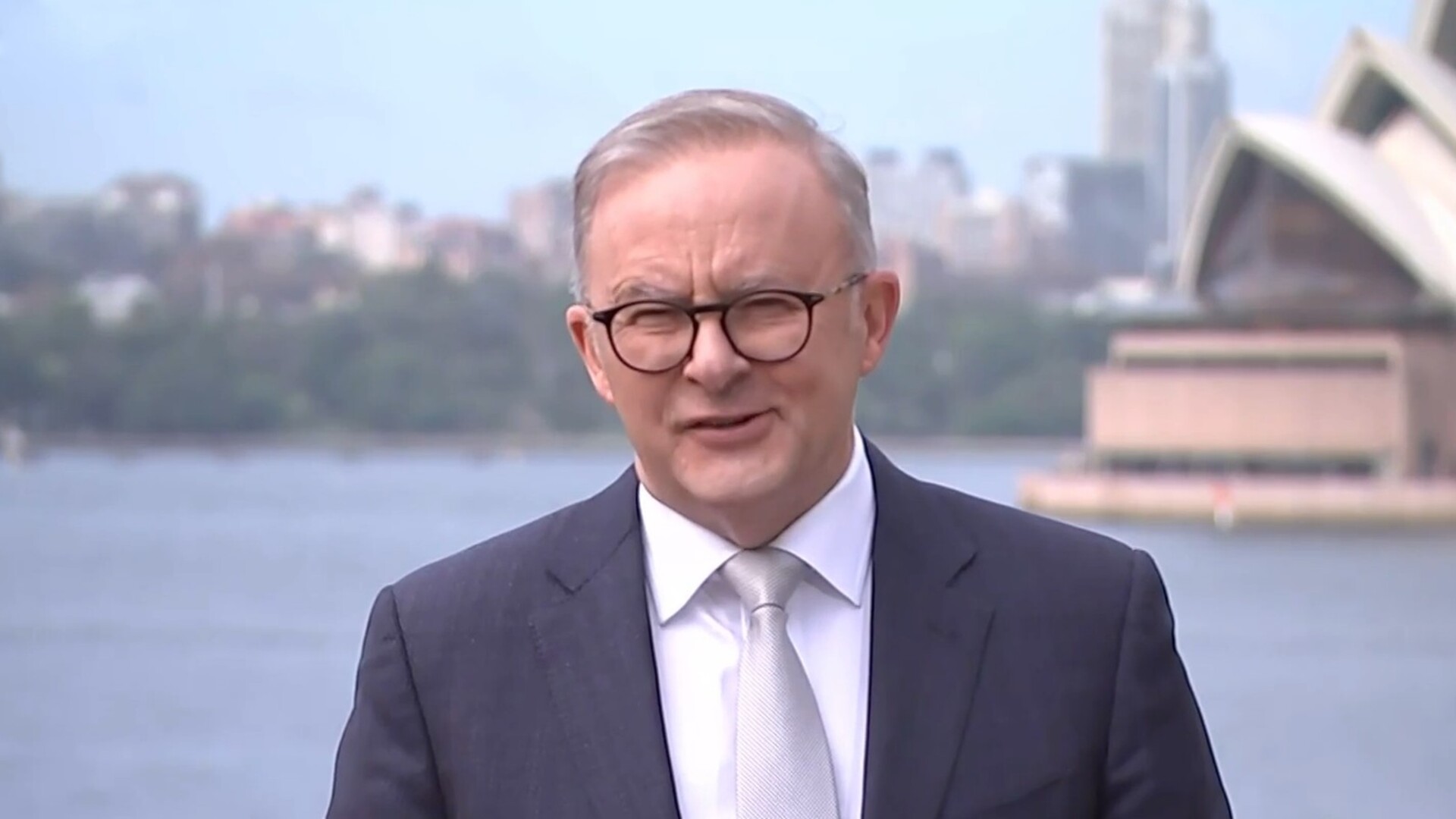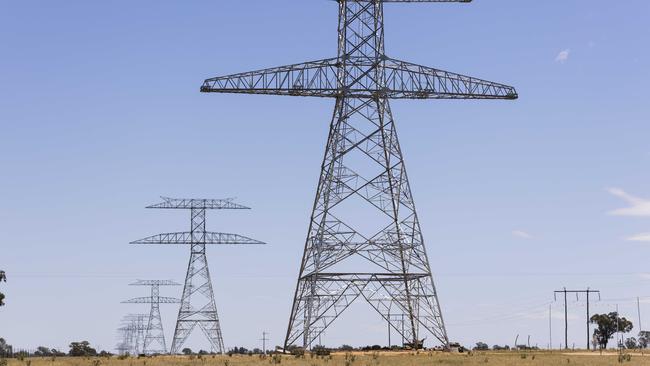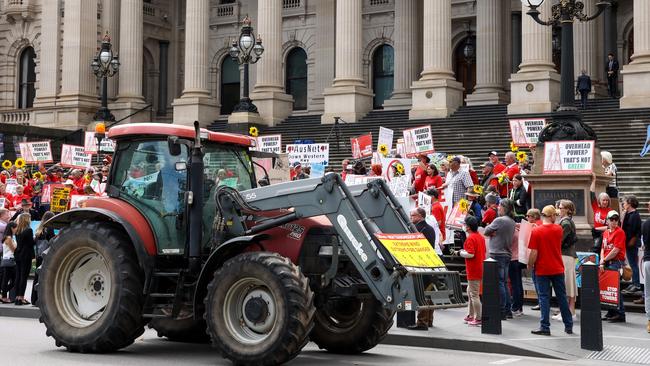New renewable energy zones and powerline locations revealed under $4.3b plan, thousands of properties to be impacted
Hundreds of kilometres of high voltage transmission lines would be built across Victoria to connect new renewable energy projects to the grid under a $4.3bn plan.

Victoria
Don't miss out on the headlines from Victoria. Followed categories will be added to My News.
Hundreds of kilometres of high voltage transmission lines would be built across Victoria to connect new renewable energy projects to the grid under a $4.3bn plan.
VicGrid, the government agency in charge of planning the state’s ambitious renewables rollout, has also released maps signposting where wind and solar is best suited in Victoria, in a bid to spur more investment in generators needed to replace retiring coal generators.
It shows the transmission component of its plan is expected to cost $4.3bn over 15 years, but energy experts say the modelling has an accuracy range of up to 100 per cent – meaning it could cost up to $8.6bn.
This has led one social services group to call for the government to absorb some or all of the costs, so that they don’t all wash through to consumers via power bills.
The plan shows new lines proposed will impact rural communities as well as residents in the outskirts of Melbourne’s west.

National director of energy policy and research at St Vincent de Paul Society, Gavin Dufty, said the government must shield vulnerable consumers from huge new costs.
“This is a lot of money. The Victorian government needs to in part or in full underwrite this, otherwise consumers will directly pay for this through their energy bills,” he said.
“Looking at the potential costs, which this document flags could be as high as $8.6bn, the government needs to lean in … so households don’t pay for all of these costs.”
VicGrid, which plans where new high voltage lines need to go, also mapped out seven draft onshore renewable energy zones where wind and solar would be “most suitable” over the next 15 years.
They include the Central Highlands, Central North, Gippsland, North West, South West, Grampians Wimmera and Wimmera Southern Mallee.
Farmers located in the proposed renewable energy zones said they were shocked to find they would be impacted, despite rallying against the plan and participating in government consultation.
VicGrid released the plan at about 3pm on Friday, the week before the State Budget, and said it had “prioritised upgrades along existing transmission lines” to build out the network.
“This minimises impacts on landholders, regional communities and the environment and limits cost impacts on consumer power bills,” it says.

“We are proposing just 4 new transmission projects across 3 programs: a second radial line and tie in loop in Gippsland to facilitate offshore wind, a new line between Sydenham and Tarrone, a new line between Truganina and Deer Park, and an additional short line between Hazelwood and Yallourn.”
It says its “optimal pathway” to augmenting the network – which is needed to effectively bolt on renewable energy generators that will replace coal – will include “430 km of existing lines and about 380 km of new lines”.
Landholders who would have the huge poles and wires built through their land would get compensation of $8000 per kilometre, but the plan is expected to prompt a fierce backlash from some farming groups that don’t want to house the new transmission assets.
Energy experts point out that the new plan doesn’t include the massive VNI West project – which is set to cost $3.3bn – and the $370m Western Renewables Link between Bulgana in western Victoria and Sydenham in Melbourne’s northwest.
They say there are huge questions about who pays for the upgrades, especially those exposed to higher transmission costs in contracts.
The Clean Energy Council released a statement saying the VicGrid plans were welcome because they give “certainty for community and clean energy investors”.
Christiaan Zuur, General Manager of Markets, Operations and Grid at the Clean Energy
Council, said industry needed certainty to invest in new generation that was needed to replace Victoria’s ageing coal generation, and that there was “a lot of devil in the detail which needs to be considered” before a final plan was approved.
Minister for Energy and Resources Lily D’Ambrosio said the plan was a step forward.
“We created VicGrid with a clear obligation to listen to communities – these draft zones are a result from the extensive and detail community consultation and feedback, and we encourage Victorians to have their say to inform the final the zones.”
“This important planning work will keep the lights on and deliver cheap renewable power to Victorian homes and businesses, long after our aging coal power plants retire.”
David Davis, Shadow Minister for Energy and Resources, said the cost to Victorians would likely be much more.
“These ‘zones’ and the hundreds of kilometres of new wires connecting them will cost billions of dollars, which will turbocharge increases in the bills of every Victorian household and small business,” he said.
“The $4.3 billion estimate is not worth the paper it is written on and it could easily be
more than twice this number. Labor should release their detailed costing for public
scrutiny today.”
Originally published as New renewable energy zones and powerline locations revealed under $4.3b plan, thousands of properties to be impacted



